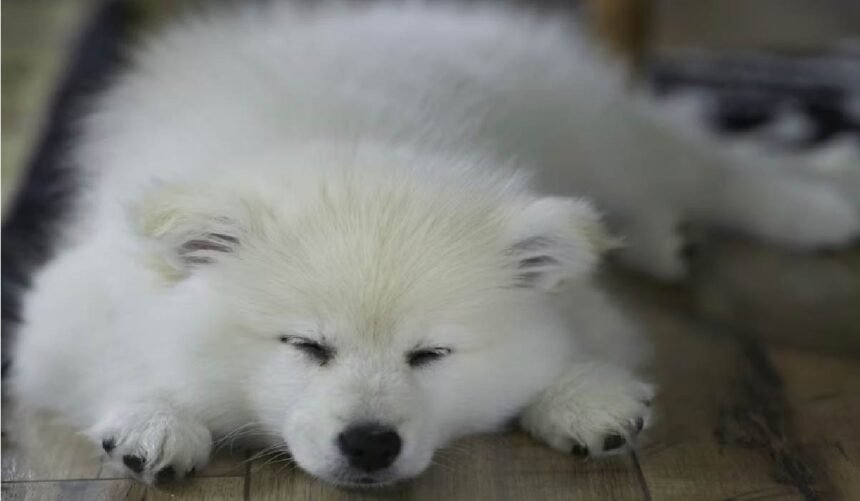You’re tossing a ball in the backyard, your pup is gleefully zooming in circles, ears flopping, tail wagging at full throttle. Lurking right under those happy paws are dangers you’d never expect.
Even the safest-looking environment can hide risks that make life ruff for our furry friends. From backyard plants to climate change, the world is sneakier than a dog stealing socks.
So grab your leash, because we’re diving into the surprising environmental risks every dog lover should know about.
Backyard Bliss or Hidden Hazard?
Doggies love sniffing around in the great outdoors, but the backyard isn’t always the paradise it looks like.
Reader’s Digest lists common hazards such as toxic plants, sharp garden tools, and even mulch that can spell trouble.
And don’t get us started on fruit trees. While some fruits are safe, others can be downright dangerous. Country Living points out that apples (in moderation) are OK-ish, but grapes are a big no-no. In short, just because you can snack on it doesn’t mean your dog should.
Household Havoc: The Sneaky Everyday Dangers
Think your living room is safe? Not so fast.
The FDA warns that everyday items like chocolate, xylitol (in sugar-free gum), and essential oils can wreak havoc on a dog’s system. That half-empty coffee cup on your desk? A jittery nightmare waiting to happen if curious paws get to it first.
If you thought socks were the only things dogs might “accidentally” ingest, think again. Buttons, batteries, and string are all top culprits for surprise vet visits.
What looks harmless to you can be life-threatening to your four-legged vacuum cleaner, according to the FDA.
When Workplaces Go Wrong
Not all risks are in the yard or living room. Sometimes, dangers come from the workplace.
Take humans, for instance: Railroad workers filed a railroad cancer lawsuit after being exposed to hazardous substances on the job. Many were diagnosed with lung cancer or chronic obstructive pulmonary disease. The cases focus on occupational exposure to benzene, asbestos, and diesel exhaust in rail yards, maintenance shops, and locomotive cabins.
Gianaris Trial Lawyers explains that despite ever-increasing medical evidence, the railroad industry failed to warn workers about the dangers.
The connection? Environments. Whether it’s a rail yard for humans or a backyard for dogs, it must be safe. If our spaces aren’t safe for us, they certainly aren’t safe for our fur kids.
Climate Change Is Going to the Dogs
For us, our furry friends might be the best thing ever. For the environment, not so much. Dogs are not only affected by climate change but also contribute to it.
A study highlighted by SciTechDaily reveals that dogs’ meat-heavy diets leave a hefty carbon pawprint.
The flip side is even scarier. Rising temperatures mean more ticks, fleas, and heat stress for our pets.
Imagine trying to go for a walk in a fur coat during a heatwave? Exactly! This isn’t about long walks in the park; it’s about the world we’re leaving for generations of good boys and girls.
Radioactive Rover? The Chernobyl Dogs
If you think your pup’s quirks are odd, wait until you hear this.
Dogs living near the Chernobyl disaster site are actually evolving due to nuclear radiation. Yep, science fiction just got real. Earth.com reports that these pups are developing genetic differences to survive the radioactive environment.
It’s fascinating… yet also a warning. Dogs are resilient. However, they shouldn’t have to adapt to the dangerous conditions we humans create.
Everyday Hazards: From Paws to Pavement
DogRemedy says that dangers can come in surprising forms.
Hot pavements that burn paws, discarded food scraps on sidewalks, or antifreeze puddles that smell sweet. City pups face risks as much as their country cousins.
Meanwhile, science is shedding light on new risks. A study in ScienceDirect explains how dogs’ exposure to environmental pollutants can impact health in ways we’re only starting to understand.
The Secret to a Longer, Happier Life
It’s not all doom and gloom, though. Research shared by SciTechDaily shows that lifestyle choices and environment can add years to your pup’s life.
Safe food, clean air, regular exercise, and lots of love are scientifically backed keys to longevity. So yes, keeping your pup safe from sneaky dangers can help them stick around longer to hog the bed and drool on your pillow.
While our dogs live in the moment, it’s our job to think ahead. That means scanning backyards for hidden hazards and learning from human stories of unsafe environments.
Because when it comes to our pups, ignorance isn’t bliss; it’s risky business. With a little awareness, we can make their world as safe and joyful as they make ours.







